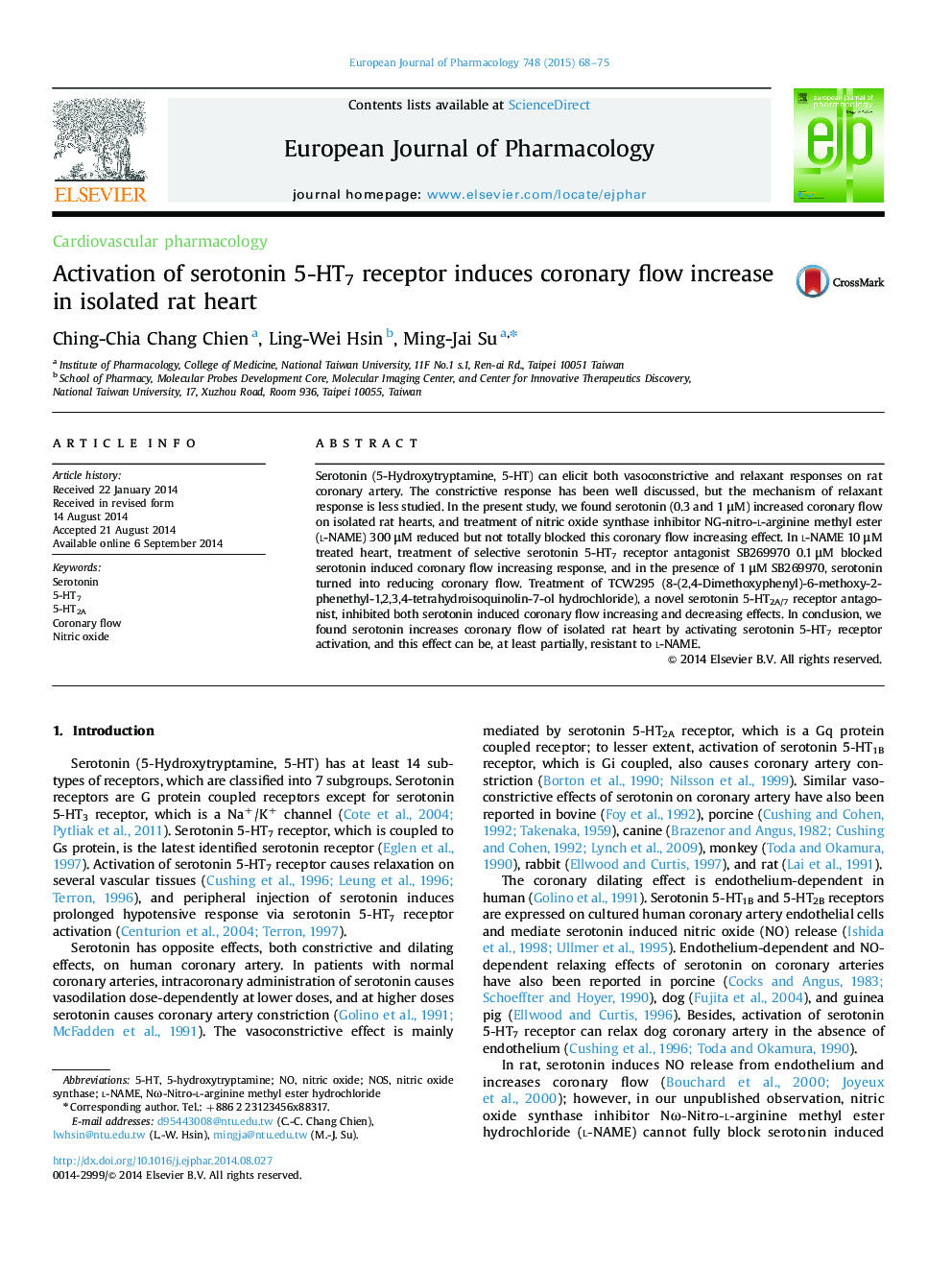| Article ID | Journal | Published Year | Pages | File Type |
|---|---|---|---|---|
| 2531532 | European Journal of Pharmacology | 2015 | 8 Pages |
Serotonin (5-Hydroxytryptamine, 5-HT) can elicit both vasoconstrictive and relaxant responses on rat coronary artery. The constrictive response has been well discussed, but the mechanism of relaxant response is less studied. In the present study, we found serotonin (0.3 and 1 μM) increased coronary flow on isolated rat hearts, and treatment of nitric oxide synthase inhibitor NG-nitro-l-arginine methyl ester (l-NAME) 300 μM reduced but not totally blocked this coronary flow increasing effect. In l-NAME 10 μM treated heart, treatment of selective serotonin 5-HT7 receptor antagonist SB269970 0.1 μM blocked serotonin induced coronary flow increasing response, and in the presence of 1 μM SB269970, serotonin turned into reducing coronary flow. Treatment of TCW295 (8-(2,4-Dimethoxyphenyl)-6-methoxy-2-phenethyl-1,2,3,4-tetrahydroisoquinolin-7-ol hydrochloride), a novel serotonin 5-HT2A/7 receptor antagonist, inhibited both serotonin induced coronary flow increasing and decreasing effects. In conclusion, we found serotonin increases coronary flow of isolated rat heart by activating serotonin 5-HT7 receptor activation, and this effect can be, at least partially, resistant to l-NAME.
Graphical abstractFigure optionsDownload full-size imageDownload high-quality image (133 K)Download as PowerPoint slide
